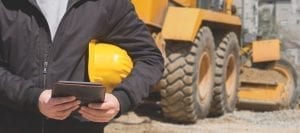
The direct exposure of lead to the environment creates varied sources of lead contamination. Lead removal includes both recently spent bullets and “historic lead”. Historic lead is lead left in the ground for a period of time throughout the history of the range. According to the Environmental Protection Agency (EPA), lead reclamation at an outdoor shooting range has 4 major steps:
- Bullet and Shot Containment Techniques: To contain the lead shot and bullets; this can involve soil relocation and pH adjustments.
- Best Management Practices to Prevent Lead Migration: To prevent lead from moving to and contaminating water. Each range is individual; with individual factors and concerns e.g. rainfall, soil type, soil chemistry.
- Lead Removal and Recycling: Remediation of historic lead requires solid hazardous waste handling techniques to comply with the Resource Recovery and Recovery Act (RCRA) and other regulatory requirements.
- Documenting Activities and Record Keeping: Accurate and legal, these records document all steps of the reclamation.
After the reclamation, proactively sustaining the range’s environmental and regulatory status requires a plan. The EPA recommends an Environmental Stewardship Program (ESP); a regulatory compliant plan that protects wildlife and natural resources.
Recently a news story came out about Pacific Rod and Gun Club in California who lost a long court battle regarding cleaning up lead impacted materials on their range. This highlights the need to keep ranges under a lead management plan and to avoid shooting into open water bodies. Contact MT2 for a free assessment and recommendations for lead reclamation Best Management Practices. Avoid becoming another closed club and part of a multi-million dollar cleanup!!
MUST #1: Shooting ranges MUST comply with all lead laws and regulations. These laws are strictly enforced and violating them can result in range closures, heavy fines, and even jail time.
MUST #2: You MUST minimize all threats from lead hazards during reclamation, remediation, and beyond.
Remediation of lead can introduce additional lead exposures and hazards. During the entire reclamation process and beyond, it is important to
- prevent further environmental damage.
- ensure legal compliance.
- protect workers and range visitors from cleanup-related lead hazards.
Must #3: You MUST have a Health and Safety Plan (HASP)
Compliant and safe shooting range lead reclamation requires highly trained, certified contractors with specialized equipment. It is imperative to hire a contractor who understands and institutes a comprehensive Health and Safety Plan (HASP) that is specific to your site. A proper HASP ensures protection of wildlife, soil, water, and people throughout the reclamation process. A properly executed HASP that is RCRA and Clean Water Act (CWA) compliant, also protects range owners from potential liabilities.
A solid HASP can be established after an on-site inspection determines necessary reclamation steps specific to your range. A HASP will include steps such as
- Lead exposure monitoring for air, water, and personnel throughout the reclamation process.
- Appropriate, properly fitted Personal Protective Equipment (PPE) to protect workers.
- Workplace inspections that include evaluation of engineering controls.
- Work site demarcation with public hazard education to prevent unauthorized access to contaminated areas
- Accurate and thorough record keeping required by law.
The National Institute for Occupational Safety and Health (NIOSH) and the Occupational Safety and Health Agency (OSHA) partnered with the National Shooting Sports to create the Lead Management and OSHA Compliance for Indoor Shooting Ranges. The plan outlines maintenance considerations for indoor ranges:
- Lead exposure monitoring*: personal air testing (in the employee/shooter’s breathing area); ambient air testing, and biological/medical (blood testing, BP, urinalysis)
- Environmental controls such as mechanical ventilation*. Mechanical ventilation requires efficacy assessment when it is installed, every 3 months when in use, any time range practices change and can impact lead exposure.
- Filter changes*. Ventilation equipment requires filter changes. These changes will depend on amount of exposure, range use, and applicable law. Improperly cleaning ventilation duct work* can expose personnel to an additional lead hazard.
Lead-contaminated ventilation filters are considered hazardous and require regulatory-compliant disposal.
- Special bullet trap concerns. Lead is more highly concentrated in the trap area; particularly if bullets are deformed by the trap. Lead levels in the trap can be dangerously elevated.
Cleaning a bullet trap typically requires additional controls, training, and PPE.
- Range Housekeeping*: It is imperative that lead dust is not stirred up during cleaning! Wet mopping and HEPA vacuuming are the recommended ways to clean up lead dust at the range. Lead-safe housecleaning requires training* and Personal Protective Equipment (PPE) such as properly fitted respirators, coveralls, and other equipment to prevent additional employee exposure to lead. PPE requires specialized maintenance storage and cleaning*.
Lead-contaminated waste water, PPE slated for disposal, and HEPA filters are considered hazardous and require regulatory-compliant disposal.
- Changing HEPA filters routinely*. Follow manufacturer’s instruction.
Lead-contaminated filters are considered hazardous and require regulatory-compliant disposal.
- Daily hygiene practices: Lead dust on your hands can enter the mouth. Do not allow eating, smoking, or drinking at the range. Be sure personnel washes hands thoroughly before doing any of these activities. Do not allow personnel to enter eating areas with contaminated clothing. Require clothing change to street clothes after shooting to prevent taking lead home with you. Require personnel to use shower facilities before you leave the range each day.
Lead-contaminated waste water is considered hazardous and requires regulatory-compliant disposal.
- Administrative controls*. Schedule rotations and sharing/splitting cleanup operations can reduce employee exposure to lead* and may reduce Workman’s Compensation injuries*.
- Employee training and education*. Educate and allow opportunity for personnel to self-educate. Be sure you’ve publicly and obviously displayed the OSHA Lead Standard and its appendices. Exposed workers must have access to General Industry Lead Standard and its appendices.
- Record keeping and retention: There are strict regulations regarding medical and environmental records. Records for exposure monitoring, medical surveillance and medical removal must be retained according to law. Keeping records of employee training and equipment testing and maintenance is strongly recommended.
* Recordkeeping and retention either required by law or strongly advised. Protect yourself and the range: Keep thorough records.
You’ve read about the hazards of lead (Pb). You have a responsibility to manage these hazards at a shooting range and feel ready to begin an Environmental Protection Agency (EPA) Environmental Stewardship Program (ESP) that protects and conserves resources from those lead hazards. You’re finally ready to clean up the shooting range!
A comprehensive Health and Safety Plan (HASP) is essential when removing lead! Along with protecting consumers and workers, a through and well-executed HASP also helps to assure regulatory compliance to avoid inadvertent environmental damage and potential hefty legal sanctions. Range clean-up may involve water and soil remediation first; then a plan to safely recover and reclaim spent bullets once that remediation is complete.
Did you know? OSHA Standard 29 CFR 1926.62(g)(2)(vi) requires that an employer give written notification to the laundry service if laundry is potentially contaminated with lead!
MT2 is well known industry wide for being the nation’s #1 largest professional provider of the full scale of outdoor/indoor range environmental and maintenance services; proven at over 2,000 ranges in all 50 states from our nationwide office network. Including our comprehensive OSHA training program, knowledge of EPA regulations and our “Never Generate Hazardous Waste Guarantee. Specializing in: Lead: Reclamation, Screening & Treatment to MAXIMIZE Your Lead Value! Environmental: EPA & OSHA Consulting; Remediation Maintenance: Filters/Ventilation, Rubber, Traps, Decontamination Construction: Renovation, Design/Build, Improvements, Closure.
Get a FREE quote for your Range Maintenance and Environmental Management at the BEST VALUE with the LOWEST RISK!


Leave a Reply